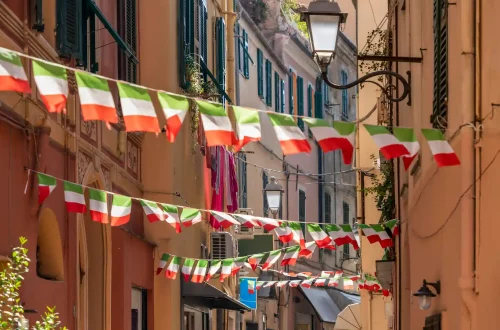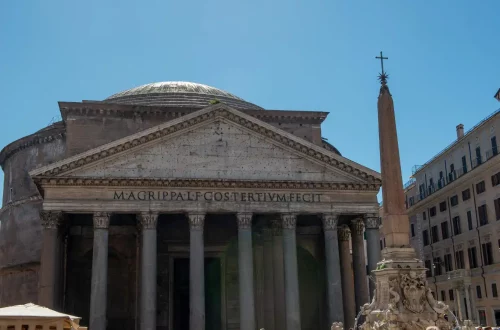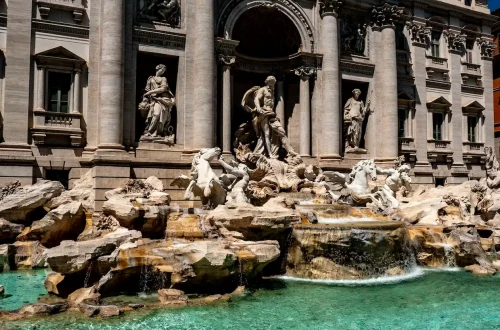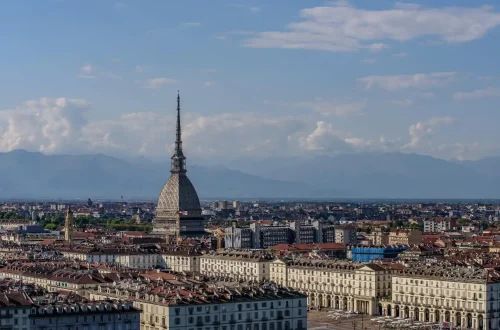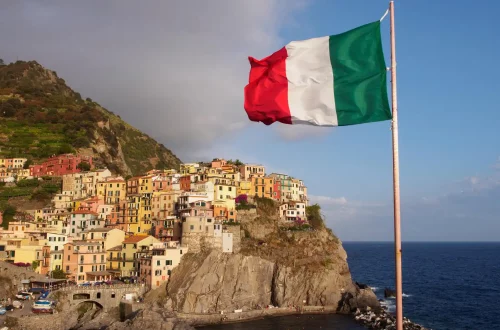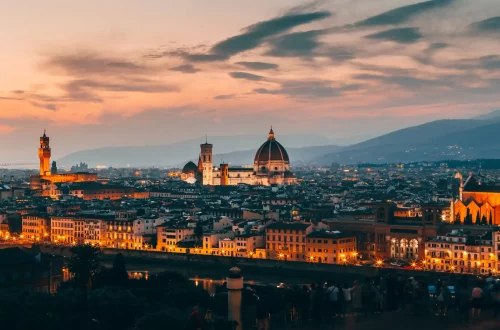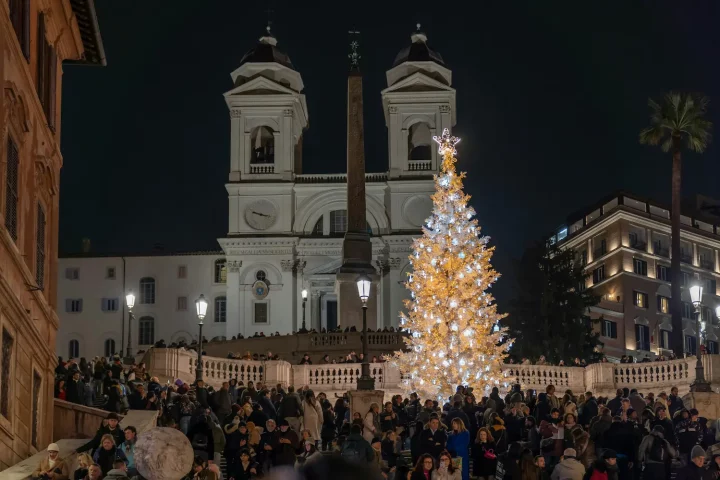Christmas in Italy is a time of joy, family gatherings, and deep-rooted traditions that reflect the country’s rich cultural heritage. The celebration of Christmas, or Natale, holds significant cultural importance across Italy, with each region adding its unique customs and flavors to the festivities.
From the bustling cities of the north to the serene villages of the south, Christmas is a time when Italians come together to celebrate love, faith, and community with unique Christmas traditions.
Italian Christmas Eve dinner: typical dishes and their origins
The Italian Christmas Eve dinner, known as La Vigilia, is a culinary feast that showcases the country’s diverse regional flavors. One of the most iconic dishes is panettone, a sweet bread loaf originally from Milan, filled with candied fruits and raisins.
Another traditional treat is torrone, a nougat made with honey, sugar, and egg whites, often filled with almonds or other nuts, which has roots in various Italian regions.
In different parts of Italy, Christmas Eve meals can vary significantly. For example, the “Feast of the Seven Fishes” originated from southern Italy. It features dishes such as baccalà (salted cod), fried calamari, and spaghetti alle vongole (spaghetti with clams).
In contrast, northern Italian regions might serve agnolotti (stuffed pasta) or bollito misto (mixed boiled meats). These regional variations highlight Italy’s rich culinary diversity and the importance of food in celebrating family and tradition during the holiday season.
Nativity scenes: a centuries-old tradition
Nativity scenes, or presepi, are a beloved Christmas tradition in Italy, dating back to the 13th century. Saint Francis of Assisi is credited with creating the first live nativity scene in 1223, aiming to bring the story of Jesus’s birth to life for villagers.
Since then, nativity scenes have become an integral part of Italian Christmas celebrations, with families and communities setting up elaborate displays that depict the Holy Family, shepherds, and various figures from daily life.
Naples is particularly famous for its intricate nativity scenes, known as presepi napoletani, which often include detailed miniature figures and landscapes. These scenes can be found in homes, churches, and public squares, attracting visitors from around the world. The craftsmanship and creativity involved in making presepi reflect the importance of this tradition in Italian culture and its role in preserving religious heritage.
Take advantage of specialized assistance to secure your passport for a borderless future.
Festivities before December 25: advent and Christmas markets
The period leading up to Christmas, known as Advent, is a time of preparation and anticipation in Italy. One of the highlights of this season is the Christmas markets, or mercatini di Natale, which pop up in towns and cities across the country.
These markets, inspired by the traditional German Christmas markets, offer a festive atmosphere with stalls selling holiday decorations, artisanal crafts, and seasonal treats like roasted chestnuts and mulled wine.
In addition to markets, many Italian towns and cities host special events and activities during Advent. These can include concerts, nativity plays, and lighting displays. The Advent season is also marked by religious observances, with many attending Mass and participating in charitable activities. The combination of festive markets and religious traditions creates a warm and joyous atmosphere that builds excitement for the upcoming Christmas celebrations.
La Befana: the witch who brings gifts between January 5 and 6
In Italy, the holiday season extends beyond Christmas to the celebration of Epiphany on January 6, marked by the arrival of La Befana. According to Italian folklore, La Befana is an old woman who delivers gifts to children on the night of January 5. She is often depicted as a kind witch riding a broomstick, carrying a sack of candies and small presents.
The legend of La Befana has several variations, but it generally tells the story of a woman who was visited by the Three Wise Men on their way to see the newborn Jesus. She declined their invitation to join them, but later regretted it and set out to find the Christ child, bringing gifts for him.
Although she never found the manger, she continues to bring gifts to children in hopes of finding Jesus. This charming tradition adds a unique and magical element to the Italian holiday season, delighting children and keeping the festive spirit alive into the new year.
Religious traditions: masses and processions
Religious observances play a central role in Italian Christmas celebrations, with many attending special church services throughout the holiday season. One of the most significant is the Midnight Mass, or Messa di Mezzanotte, held on Christmas Eve.
This service, celebrated in churches across Italy, commemorates the birth of Jesus with prayers, hymns, and often a nativity play. Attending Midnight Mass is a cherished tradition for many Italian families, symbolizing the spiritual heart of Christmas.
In addition to church services, some Italian towns and cities hold traditional processions during the festive period. These processions often involve participants dressed in historical or religious costumes, carrying statues or relics through the streets. They are accompanied by music and prayers, creating a moving and communal expression of faith.
Understanding these rich and diverse Christmas traditions can greatly enrich the experience of those seeking to connect with their Italian heritage. Whether it is through savoring traditional dishes, participating in age-old customs, or attending religious ceremonies, each tradition offers a meaningful way to honor and celebrate Italian culture.
For individuals seeking Italian citizenship, embracing these customs provides a deeper connection to their ancestral roots and a greater appreciation for the values and traditions that define Italian identity.
Considering professional services, such as those offered by io.citizen, can provide comprehensive guidance in exploring one’s cultural heritage and navigating the path to dual citizenship. By delving into these traditions, individuals can not only celebrate the festive season but also forge a lasting bond with their Italian heritage.
